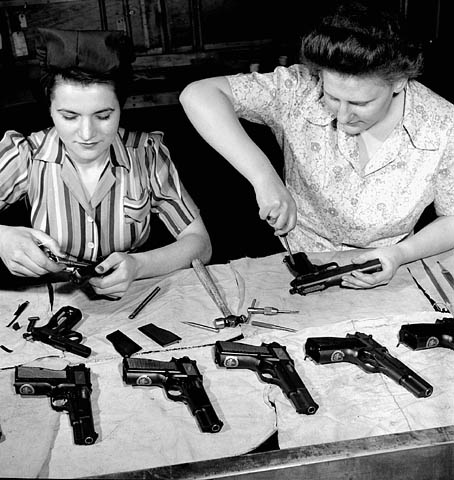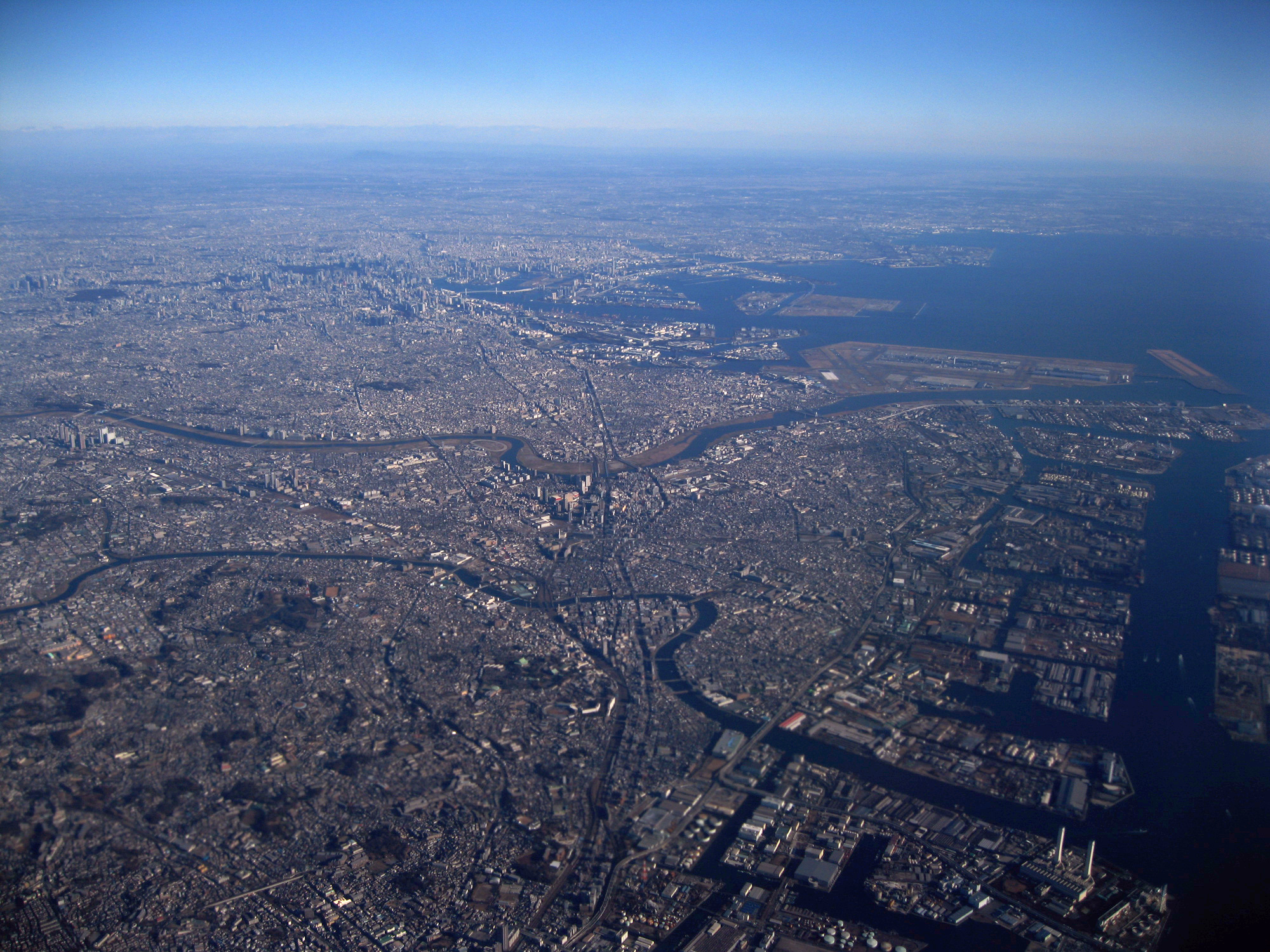|
Keiyō Industrial Zone
, also known as the Keiyō Industrial Region, the Keiyō Industrial Area, or the Keiyō Industrial Belt, is an industrial zone on the northeastern coast of Tokyo Bay that crosses 8 cities in Chiba Prefecture, Japan. The zone spans from the western part of Urayasu in the northeast to Futtsu in the southeast of the region. The zone has no political or administrative status. Etymology The name of the industrial zone is formed from two kanji characters. The first, , means "capital city" and refers to Tokyo. The second, , meaning "leaf", is the second kanji in "Chiba" and refers to Chiba Prefecture, and the compound refers to the Tokyo-Chiba region. Geography The Keiyō Industrial Zone spans the coast of Tokyo Bay from Urayasu in the northeast, through Funabashi, Chiba City, Kisarazu, Kimitsu, Ichihara, Sodegaura, and ends in Futtsu to the southeast. Numerous small rivers empty into the industrial region, and provide a source of water to support industry. They include the Edo Ri ... [...More Info...] [...Related Items...] OR: [Wikipedia] [Google] [Baidu] |
Port Of Chiba
The is the largest seaport in Japan, located in Chiba Prefecture on the interior of Tokyo Bay. The Port spans across the cities of Ichikawa, Funabashi, Narashino, Chiba, Ichihara, and Sodegaura. History Port activity has existed in the area since the Kamakura period. By the end of the Edo period the port had an active trade in salt and grain with the Port of Yokohama. Land reclamation for port facilities began in 1910. The port sustained extensive damage in aerial bombing during World War II. The modern Port of Chiba opened in August 1953, and played a large part in the building of the import/export economy following the war. The port became an integral part of the Keiyō Industrial Zone. Cargo The Port of Chiba handles 166,964,000 tons of cargo annually, ranking it second in Japan in terms of cargo handling. 65,200 vessels are handled annually. 94% of its cargo is industrial in nature. It imports crude petroleum, Liquefied Natural Gas, and other oil products, and exports ... [...More Info...] [...Related Items...] OR: [Wikipedia] [Google] [Baidu] |
Yōrō River
The is a river in Chiba Prefecture, Japan. It is in length and has a drainage area of . Under the Rivers Act of 1906 the Yōrō is designated as a Class 2 River. The Yōrō originates near Mount Kiyosumi on the border of Amatsukominato area of Kamogawa, Chiba, Kamogawa and Ōtaki, Chiba, Ōtaki, and then passes through Ōtaki and Ichihara, Chiba, Ichihara. The Yōrō Ravine and Awamata Falls are located in the upper part of the Yōrō, and it meets the Koshikiya River, the Heizō River, and the Uchida River at its midpoint. Land around the middle and lower parts of the Yōrō have been developed for rice production. The river flows through significant parts of the Bōsō Hill Range before it empties into Tokyo Bay in the Goi and Iwazaki districts of Ichihara. Land reclamation at the mouth of the Yōrō is a component of the Keiyō Industrial Zone. The Kominato Line of the Kominato Railway roughly follows the path of the Yōrō and provides access to many of the tourist destination ... [...More Info...] [...Related Items...] OR: [Wikipedia] [Google] [Baidu] |
World War II
World War II or the Second World War, often abbreviated as WWII or WW2, was a world war that lasted from 1939 to 1945. It involved the vast majority of the world's countries—including all of the great powers—forming two opposing military alliances: the Allies and the Axis powers. World War II was a total war that directly involved more than 100 million personnel from more than 30 countries. The major participants in the war threw their entire economic, industrial, and scientific capabilities behind the war effort, blurring the distinction between civilian and military resources. Aircraft played a major role in the conflict, enabling the strategic bombing of population centres and deploying the only two nuclear weapons ever used in war. World War II was by far the deadliest conflict in human history; it resulted in 70 to 85 million fatalities, mostly among civilians. Tens of millions died due to genocides (including the Holocaust), starvation, ma ... [...More Info...] [...Related Items...] OR: [Wikipedia] [Google] [Baidu] |
Decentralization
Decentralization or decentralisation is the process by which the activities of an organization, particularly those regarding planning and decision making, are distributed or delegated away from a central, authoritative location or group. Concepts of decentralization have been applied to group dynamics and management science in private businesses and organizations, political science, law and public administration, economics, money and technology. History The word "''centralisation''" came into use in France in 1794 as the post-French Revolution, Revolution French Directory leadership created a new government structure. The word "''décentralisation''" came into usage in the 1820s. "Centralization" entered written English in the first third of the 1800s; mentions of decentralization also first appear during those years. In the mid-1800s Alexis de Tocqueville, Tocqueville would write that the French Revolution began with "a push towards decentralization...[but became,] in the e ... [...More Info...] [...Related Items...] OR: [Wikipedia] [Google] [Baidu] |
Shōwa Period
Shōwa may refer to: * Hirohito (1901–1989), the 124th Emperor of Japan, known posthumously as Emperor Shōwa * Showa Corporation, a Japanese suspension and shock manufacturer, affiliated with the Honda keiretsu Japanese eras * Jōwa (Heian period) (承和), alternatively read as Shōwa, from 834 to 848 * Shōwa (Kamakura period) (正和), from 1312 to 1317 * Shōwa (1926–1989) (昭和), from 1926 to 1989 Japanese places * Shōwa, Akita, a former town in Akita Prefecture * Shōwa, Yamanashi, a town in Yamanashi Prefecture * Shōwa, a former town in Tokyo, now part of Akishima, Tokyo * Shōwa-ku, a ward of Nagoya, Aichi Prefecture * Shōwa, Fukushima, a village in Fukushima Prefecture * Shōwa, Gunma, a village in Gunma Prefecture * Shōwa, Saitama, a dissolved town in Saitama Prefecture * Showa Station (Antarctica), a Japanese research station located in Antarctica Japanese educational institutions * Showa University, in Tokyo * Showa Women's University, in Tokyo * Show ... [...More Info...] [...Related Items...] OR: [Wikipedia] [Google] [Baidu] |
Defense Industry
The arms industry, also known as the arms trade, is a global industry which manufactures and sells weapons and military technology. It consists of a commercial industry involved in the research and development, engineering, production, and servicing of military material, equipment, and facilities. Arms-producing companies, also referred to as arms dealers, or as the military industry, produce arms for the armed forces of states and for civilians. Departments of government also operate in the arms industry, buying and selling weapons, munitions and other military items. An arsenal is a place where arms and ammunition - whether privately or publicly owned - are made, maintained and repaired, stored, or issued, in any combination. Products of the arms industry include guns, artillery, ammunition, missiles, military aircraft, military vehicles, ships, electronic systems, military communications, night-vision devices, holographic weapon sights, laser rangefinders, laser sights, ... [...More Info...] [...Related Items...] OR: [Wikipedia] [Google] [Baidu] |
World War I
World War I (28 July 1914 11 November 1918), often abbreviated as WWI, was one of the deadliest global conflicts in history. Belligerents included much of Europe, the Russian Empire, the United States, and the Ottoman Empire, with fighting occurring throughout Europe, the Middle East, Africa, the Pacific, and parts of Asia. An estimated 9 million soldiers were killed in combat, plus another 23 million wounded, while 5 million civilians died as a result of military action, hunger, and disease. Millions more died in genocides within the Ottoman Empire and in the 1918 influenza pandemic, which was exacerbated by the movement of combatants during the war. Prior to 1914, the European great powers were divided between the Triple Entente (comprising France, Russia, and Britain) and the Triple Alliance (containing Germany, Austria-Hungary, and Italy). Tensions in the Balkans came to a head on 28 June 1914, following the assassination of Archduke Franz Ferdin ... [...More Info...] [...Related Items...] OR: [Wikipedia] [Google] [Baidu] |
Yokohama, Kanagawa
is the second-largest city in Japan by population and the most populous municipality of Japan. It is the capital city and the most populous city in Kanagawa Prefecture, with a 2020 population of 3.8 million. It lies on Tokyo Bay, south of Tokyo, in the Kantō region of the main island of Honshu. Yokohama is also the major economic, cultural, and commercial hub of the Greater Tokyo Area along the Keihin Industrial Zone. Yokohama was one of the cities to open for trade with the West following the 1859 end of the policy of seclusion and has since been known as a cosmopolitan port city, after Kobe opened in 1853. Yokohama is the home of many Japan's firsts in the Meiji period, including the first foreign trading port and Chinatown (1859), European-style sport venues (1860s), English-language newspaper (1861), confectionery and beer manufacturing (1865), daily newspaper (1870), gas-powered street lamps (1870s), railway station (1872), and power plant (1882). Yokohama developed r ... [...More Info...] [...Related Items...] OR: [Wikipedia] [Google] [Baidu] |
Keihin Region
The consists of the Japanese cities Tokyo, Kawasaki, and Yokohama. The term is mostly used to describe these cities as one industrial region. ''Keihin'' is derived from the second character of Tōkyō, , which can be read ''kyō'' or ''kei'', and the second character of Yokohama, , which can be read ''hin'' or ''hama''. The Keihin region is part of the larger Kantō region. See also *Keihanshin *Keihin Electric Express Railway * Keihin-Tōhoku Railway Line *Keihin Ferry Boat *List of regions of Japan *Japan Japan ( ja, 日本, or , and formally , ''Nihonkoku'') is an island country in East Asia. It is situated in the northwest Pacific Ocean, and is bordered on the west by the Sea of Japan, while extending from the Sea of Okhotsk in the north ... External links Britannica Concise Encyclopedia: Keihin Industrial Zone {{Authority control Kantō region ... [...More Info...] [...Related Items...] OR: [Wikipedia] [Google] [Baidu] |
Seaside Resort
A seaside resort is a resort town, town, village, or hotel that serves as a Resort, vacation resort and is located on a coast. Sometimes the concept includes an aspect of official accreditation based on the satisfaction of certain requirements, such as in the German ''Seebad''. Where a beach is the primary focus for tourists, it may be called a beach resort. History Seaside resorts have existed since antiquity. In Ancient Rome, Roman times, the town of Baiae, by the Tyrrhenian Sea in Italy, was a resort for those who were sufficiently prosperous. Barcola in northern Italy, with its Roman luxury villas, is considered a special example of ancient leisure culture by the sea. Mersea Island, in Essex, England was a seaside holiday destination for wealthy Romans living in Colchester. The development of the beach as a popular leisure resort from the mid-19th century was the first manifestation of what is now the global tourist industry. The first seaside resorts were opened in the 18th ... [...More Info...] [...Related Items...] OR: [Wikipedia] [Google] [Baidu] |
Shellfish
Shellfish is a colloquial and fisheries term for exoskeleton-bearing aquatic invertebrates used as food, including various species of molluscs, crustaceans, and echinoderms. Although most kinds of shellfish are harvested from saltwater environments, some are found in freshwater. In addition, a few species of land crabs are eaten, for example ''Cardisoma guanhumi'' in the Caribbean. Shellfish are among the most common food allergens. Despite the name, ''shellfish'' are not fish. Most shellfish are low on the food chain and eat a diet composed primarily of phytoplankton and zooplankton. Many varieties of shellfish, and crustaceans in particular, are actually closely related to insects and arachnids; crustaceans make up one of the main subphyla of the phylum Arthropoda. Molluscs include cephalopods (squids, octopuses, cuttlefish) and bivalves (clams, oysters), as well as gastropods (aquatic species such as whelks and winkles; land species such as snails and slugs). M ... [...More Info...] [...Related Items...] OR: [Wikipedia] [Google] [Baidu] |
Seaweed
Seaweed, or macroalgae, refers to thousands of species of macroscopic, multicellular, marine algae. The term includes some types of '' Rhodophyta'' (red), ''Phaeophyta'' (brown) and ''Chlorophyta'' (green) macroalgae. Seaweed species such as kelps provide essential nursery habitat for fisheries and other marine species and thus protect food sources; other species, such as planktonic algae, play a vital role in capturing carbon, producing at least 50% of Earth's oxygen. Natural seaweed ecosystems are sometimes under threat from human activity. For example, mechanical dredging of kelp destroys the resource and dependent fisheries. Other forces also threaten some seaweed ecosystems; a wasting disease in predators of purple urchins has led to a urchin population surge which destroyed large kelp forest regions off the coast of California. Humans have a long history of cultivating seaweeds for their uses. In recent years, seaweed farming has become a global agricultural practic ... [...More Info...] [...Related Items...] OR: [Wikipedia] [Google] [Baidu] |









